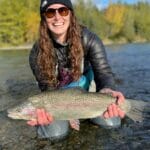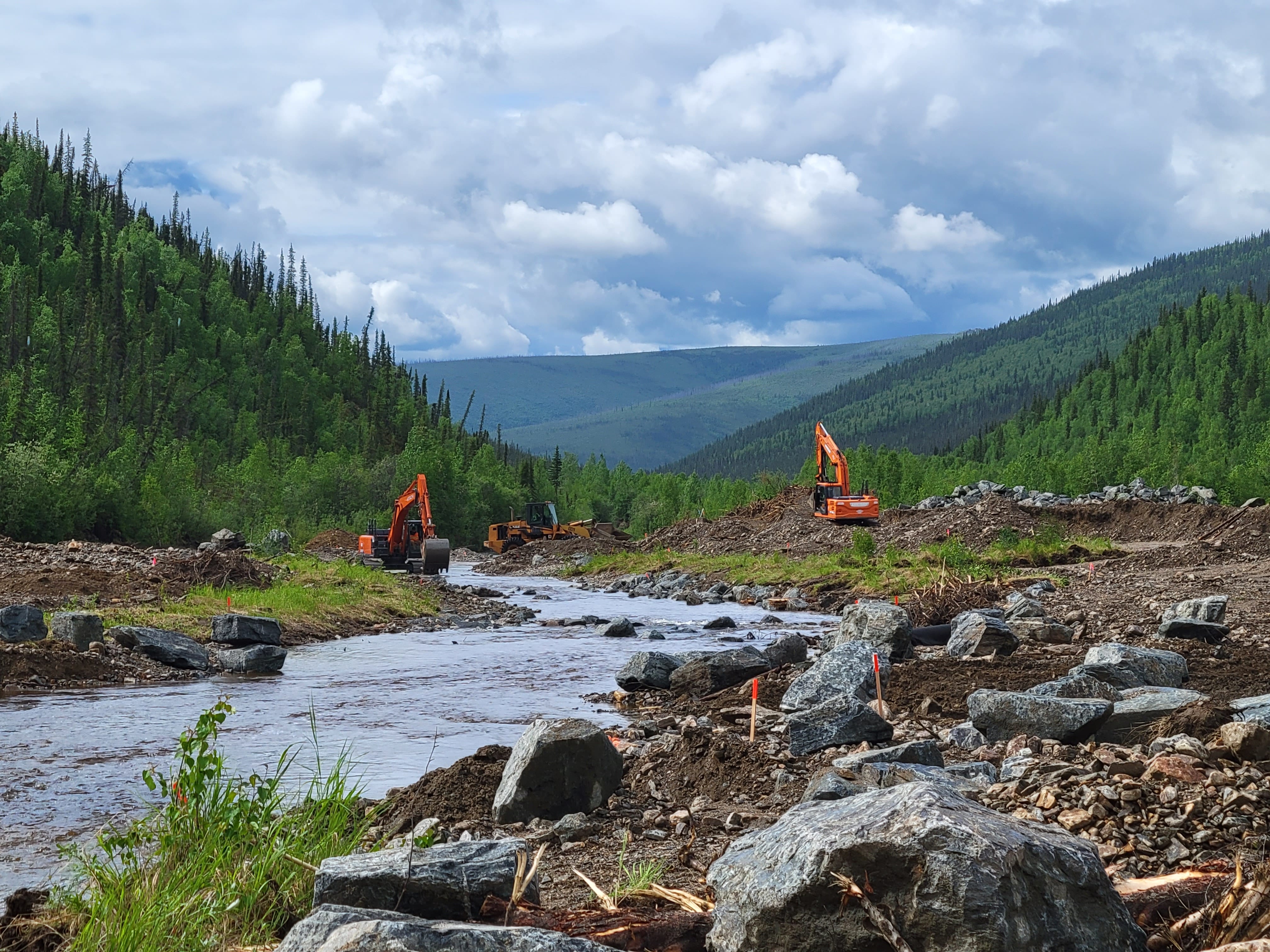BLM restoration projects provide important research that is transforming mining practices in interior Alaska
Alaska’s Bureau of Land Management (BLM) manages 70 million acres of mountains, rivers, wetlands and tundra on public lands for multiple uses and the conservation of natural, historical and cultural resources. Alaskans and visitors use these lands and waters for recreational, subsistence and economic opportunities, while valuable fish and wildlife populations make their homes there. The BLM has to balance these competing demands.
A large swath of BLM lands have been historically mined, are currently being mined or are open to future mineral exploration. Mining often overlaps with fish habitat that is crucial for Alaskans’ subsistence lifestyles, recreational fishing opportunities and tourism-based economies. So, the BLM teamed up with miners and scientists to test and improve stream reclamation techniques used by miners and apply that knowledge to restore habitats impacted by legacy mining. Those partnerships led to significant restoration efforts throughout Alaska and reversed the adverse impacts of past mining activities, enhanced the stability and productivity of waterways and bolstered the ecosystem in riparian areas.
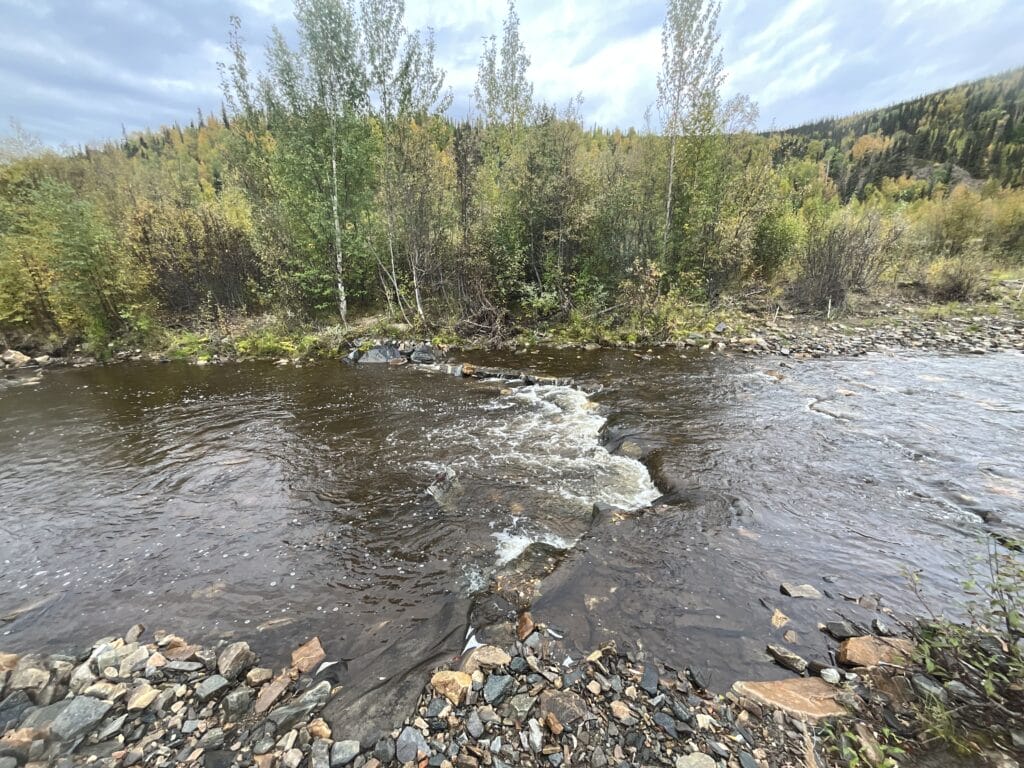
Currently, federal law requires miners to reclaim land after mining. This process involves stabilizing the site to minimize erosion, establishing vegetation and rehabilitating fish and wildlife habitat. The bureau supports miners with the technical expertise needed to return mined waters back to functioning fish habitat. Reclamation works to alleviate the damage caused by mining, but it does not require full ecosystem restoration. Restoration takes things several steps farther, aiming to return landscapes back to their original state with full or as close to full ecological function as possible. Restoration meets higher standards and has greater benefits to fish, wildlife and people.
“Anything we can do to move from basic reclamation to habitat restoration is a good thing,” said Matt Varner, fisheries resources lead for the BLM’s Aquatic Resources Program. “Restoration is an important aspect of the BLM’s mission.”
“Restoration is like an underwater puzzle that takes a specific skill set,” said Dean Race, owner of Race Family Mining. Dean has worked with the bureau to restore habitat in the Fortymile Mining District and feels strongly about mining responsibly and leaving the land in good condition. “The guidance BLM gives allows those who don’t have previous experience to complete restoration.”
Wade Creek
Wade Creek, a part of the Fortymile Wild and Scenic River, flows next to the Taylor Highway. Wade Creek is part of the oldest mining district in interior Alaska, which was once bustling with activity after gold was discovered in 1886. Wade Creek’s claims have been continuously mined since the creek’s heyday in the early 1900s. The region’s first bucket line dredges operated from 1935 to 1941, which greatly expanded the scope and speed of mining. The region still boasts a strong mining culture with 20 active claims.
An angler in Wade Creek will still see and traverse degraded instream habitat and floodplain while chasing grayling. Historical mining redirected the stream channel and removed critical soil and vegetation that left a stream channel with fast streamflow and few pools nor places for fish to live. Severe bank erosion and mine tailing piles occupy riparian, or streamside areas. These conditions degraded water quality and contributed to flooding that damaged the Taylor Highway and downstream campgrounds in 2018.
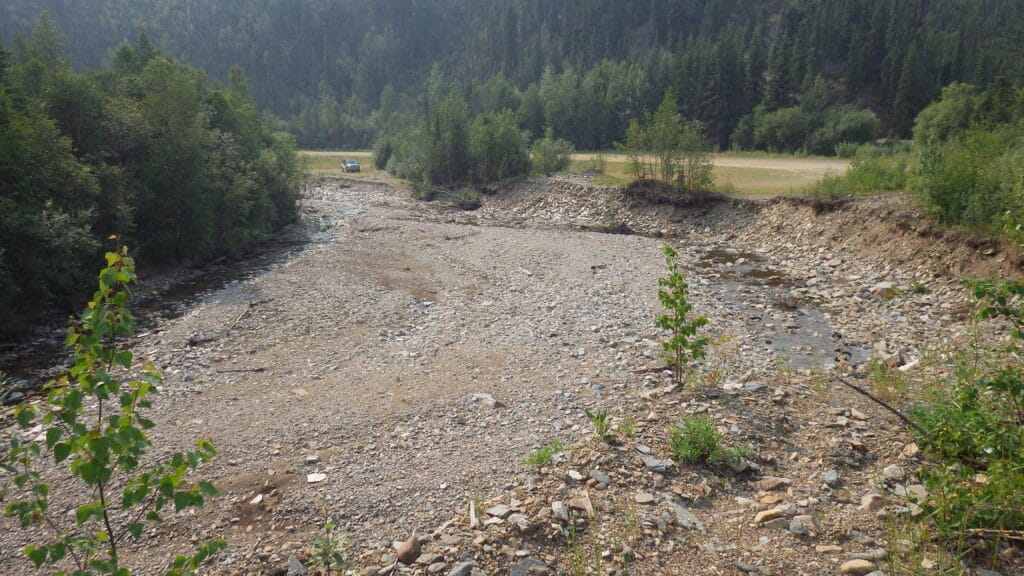
To fix these issues, the BLM partnered with the Salcha-Delta Soil and Water Conservation District to repair sections of Wade Creek that are now closed to mining. A complete re-route of the existing stream channel and significant floodplain improvements were made in 2023. The project created pools where fish can feed and rest while tailings piles were removed and topsoil and native plants added.
Future work will focus on improved floodplain conditions, reduced erosion and enhanced fish habitats throughout the watershed. The bureau will conduct restoration activities on approximately 12 miles of Wade Creek over the next five years.
Working to make a healthy Wade Creek once again
A healthy stream has pools and riffles, connectivity to wetlands in the floodplain and side channels and rich soil along the streambanks where native vegetation reduces erosion and flooding and improves water quality.

The Wade Creek restoration project hopes to return these features back to several miles of stream impacted by historic mining. Collectively, the work supports more robust populations of fish and wildlife, improves water quality, reduces the impacts of flooding on infrastructure and supports local jobs.
Wade Creek’s restoration work has had wide reaching impacts far beyond that corner of Alaska. The project is part of BLM’s outdoor learning lab, where cutting-edge restoration techniques were tested for applications in Alaska’s challenging field conditions. The bureau began to focus on applied research of stream rehabilitation techniques in the upper Yukon Region in 2013. This early work led to the design and implementation of a project on Wade Creek in 2015.
That first project area experienced major flooding several years after completion, which changed the newly excavated stream channel. Fortunately, several other sections of Wade Creek had been treated using a variety of habitat enhancement techniques, all of which survived the flood event largely unscathed. Successes on these projects coupled with the failures noted on the first project led BLM to refine their methods and ensure future habitat enhancement projects stand up to Alaska’s dynamic conditions.
“I used to never see people fishing in Wade Creek,” said Dean Race. “Now every time I drive down the Taylor Highway in the summer, I see people fishing in the restored habitat.”
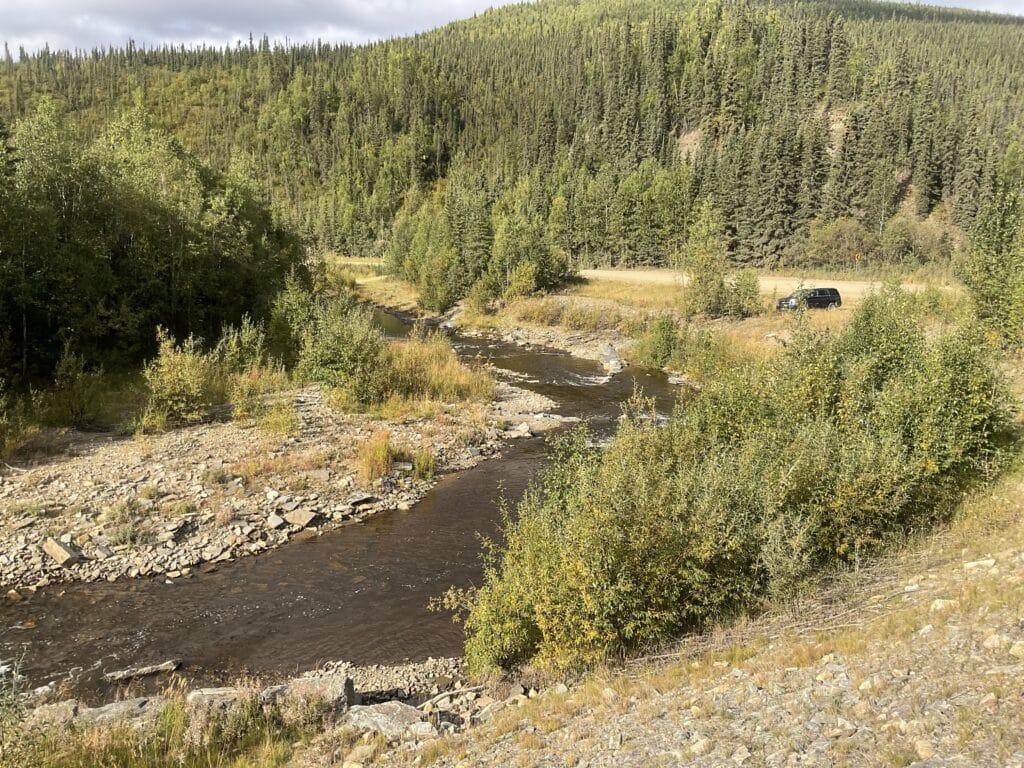
This research helped the Bureau develop restoration techniques to improve their own projects and guide reclamation work carried out by miners. The BLM’s “Stream Design and Reclamation Guide for Interior Alaska” captured years of research and intense effort into a comprehensive resource to help miners incorporate fine-tuned restoration practices into their reclamation efforts. BLM’s testing and refinement of stream restoration techniques in Alaska garnered attention from agencies in Canada that are struggling to improve streams degraded by past mining. In Alaska, BLM started to build a community of practice around stream restoration through partnerships with Trout Unlimited and other stakeholders.
“The stream restoration techniques that BLM is field testing on Wade Creek are expanding the knowledge and effectiveness of restoration in interior and Arctic Alaska,” said Aaron Prussian, Trout Unlimited’s Alaska habitat restoration director. “Trout Unlimited is a proud partner on this project and excited to work with BLM to bring more of this work across Alaska.”
Implementing the reclamation guide
The reclamation guide has been used extensively across the Fortymile mining district and beyond, including parts of the Denali and Dalton Highways.
A notable application of this work occurred on Davis Creek, which is a tributary of the South Fork Koyukuk River. Davis Creek was heavily degraded and needed significant work to repair its Chinook rearing habitat. The BLM provided the miner with technical assistance to help ensure his efforts had the maximum benefit for this beloved species. They developed a stream reclamation plan and were onsite for several weeks to assist with construction. Thanks to their efforts, this valuable habitat is rearing Chinook salmon once again.
Gravel to Gravel Initiative
Wade Creek’s restoration is part of the BLM’s Gravel to Gravel Initiative. The initiative seeks to improve the resilience of ecosystems and salmon in Alaska’s Yukon, Kuskokwim and Northen Bering Sea regions. The BLM and U.S. Fish and Wildlife Service are spearheading this effort for the Department of the Interior with eight Tribal organizations. The group focuses on projects that invest in clean water, clean air, wildlife habitat, cultural resources and open spaces to benefit all people, wildlife and local economies for generations to come. BLM’s restoration efforts are a focal point of Gravel to Gravel’s multi-pronged approach.
As the decline of Pacific salmon populations have devastating impacts on communities across Alaska, ensuring healthy habitat through their full native range is essential. Armed with a large investment and an innovative and collaborative approach between agencies and community partners, an intense restoration effort will continue across the Yukon-Kuskokwim-Northern Bering Sea regions for years to come. Wade Creek and the restoration techniques honed there will support a wide range of future projects conducted by both the BLM and the miners themselves. Each restored stream and piece of healthy habitat weaves together the patchwork quilt of abundant fisheries that Alaska is known and revered for.
Trout Unlimited’s mission is to protect, reconnect and restore North America’s coldwater fisheries and their watersheds. Learn about our work in Alaska at prioritywaters.tu.org/alaska. Marian Giannulis is Trout Unlimited’s Alaska Communications & Engagement Director.


